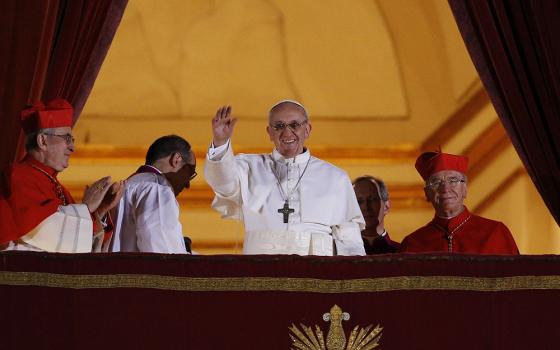 OUR KIDS: THE AMERICAN DREAM IN CRISIS
OUR KIDS: THE AMERICAN DREAM IN CRISIS
By Robert D. Putnam
Published by Simon & Schuster, $28
Almost all Americans, when asked, claim to believe firmly in equality of opportunity for every citizen. If so, asks Robert Putnam, author of the runaway bestseller Bowling Alone, then why is the gap between the poorest members of society and the wealthiest growing and growing?
Growing, in fact, to the point that one can talk about two, if not three Americas. How can it be that in the city of Atlanta, to give just one example, there can exist just a few miles from one another an affluent suburb with a child poverty rate of almost zero and an inner-city ghetto with a 75 percent child poverty rate?
In this latest book, Putnam gives particular attention to the lives of children in today's United States. In a series of chapters exploring in turn families, parenting, schooling and community, he paints a picture of the social forces that vastly compromise our stated American commitment to opportunity for all.
While most educated Americans know the story Putnam tells in a general way, we give at best notional assent to the idea that this is a growing and dangerous problem, not only for the vast numbers of people trapped in poverty but also for the health of American democracy itself. Admitting that he shared this very unfocused awareness until he began to prepare the present book, Putnam employs two distinct approaches to bringing the reality of our national plight to wider attention.
Each of the four central chapters focuses on one American location -- Bend, Ore.; Atlanta; Orange County, Calif.; Philadelphia -- singling out two or three young people and their families and reporting on detailed interviews conducted with them. The chapter then follows these personal, even intimate sketches with statistical and demographic details that link the geographical specificity to the wider national situation.
So, for example, in Orange County we meet Isabella, the daughter of fairly affluent Mexican-American parents, and Lola and Sofia, raised by their grandparents in much poorer circumstances. Each family lives close to a public high school, and we are not surprised to learn that Isabella's school has an average SAT 600 points higher than Lola and Sophia's school, nor that in one school only 14 percent qualify for a free lunch while 84 percent do so at the other, or that the truancy rate at one is 2 percent, at the other 33 percent.
Across the four chapters, Putnam rehearses the familiar story of unintended pregnancies, unwed and often absent parents, drugs, alcohol, unemployment, and children abandoned to the street or parked with an aunt or a grandparent, often for many years. He reinforces the familiar message that stable families, committed parenting, quality schools and a supportive community make for success.
These four factors allow children to grasp the opportunity they are offered. But for the overwhelming majority of those living below the poverty line, one or more -- often all four -- needs are simply not met. So, in 2010, 65 percent of children under 7 who were born to parents with a high school education or less were living in a single-parent family. For children of parents with a college degree or higher, the figure was 8 percent.
Replicating their own childhood experience, parents on welfare encourage their children verbally about half as often as working-class parents, and only about 15 percent as often as professionals. The wealthiest schools have suspension rates below 10 percent, the poorest schools average around 22 percent. And community support measured by social trust, availability of informal mentors, number of family friends and participation in churches are all much more available to the affluent than to the poor.
The critical challenge of the demographic picture that Putnam lays out is not found simply in statistics like these, but in the social and even political consequences for all of us.
His real concern is that over the past few decades the gap between the more and less privileged has been growing steadily. Schools, parental support, family stability, income disparities, have all changed dramatically, and there seems to be no end to the trend. As he points out in his final chapter, we may very well be breeding a large, alienated underclass with little or no chance of upward social mobility.
History has provided numerous examples of how political demagoguery can use such disaffected populations to undermine democracy. But, in the end, Putnam's point is a moral one. This deplorable national disgrace is an offense to our values and affront to our national pride.
So what is to be done? Here is where Putnam's argument falters just a little. Structurally, he seems not to pay any attention to where middle-class America fits into his picture. What about the 30-40 percent who are neither poor nor doing very well, thank you? How are these statistical trends affecting them, and does whatever the effects are lead them to become part of the problem or stimulate them to be part of the solution? After all, unlike the truly poor, these people vote.
This leads to a second reservation about the argument. In his final chapter, laying out some approaches to a solution, Putnam argues that problems of this magnitude are not a red problem or a blue problem, but "a purple problem." Right enough.
However, I cannot see any of the solutions he suggests being acceptable to the "red" side of Congress. Changes of this magnitude require significant expenditures. And although he makes a very clear case that spending on the poor and their problems would save enormous sums in the long run by creating the conditions in which all Americans could grasp opportunity and become productive members of society, our political system is on the whole not sympathetic to the long-term view. Climate change deniers correlate highly with those who blame the poor for their problems, and warning them of the future problems they are incubating seems to have little effect.
Putnam's book is a sobering account of the growing gap between the more and less affluent. There are very few villains here, since he never mentions the wickedly wealthy hiding in their gated communities or preying upon the 99 percent of us from the safety of their offshore investments. The successful families and their children whom he highlights have all worked hard to get where they are.
In the end, this is his point. They are fine examples of the kind of opportunity that ought to be available to all but is not available, and becoming less so. Putnam doesn't get on his soapbox, but the implications of his book are at least implicitly shaming to those of us who enjoy the opportunity that is supposed to be available to all.
[Paul Lakeland is the director of the Center for Catholic Studies at Fairfield University.]

